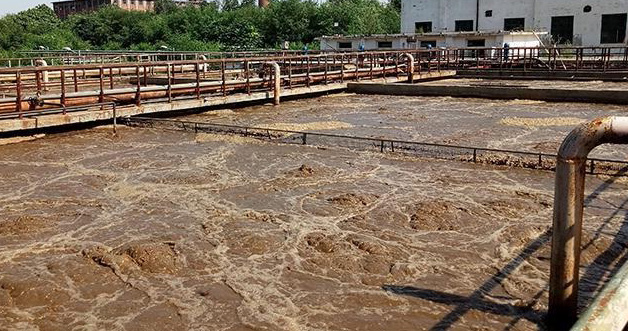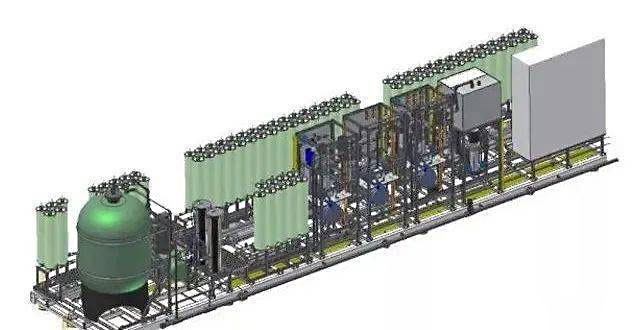The following introduces the key issues and solutions for membrane systems.
I. Decline in Membrane System Treatment Capacity
After operating for a period, membrane systems may experience a significant reduction in treatment capacity, failing to meet design specifications. This phenomenon is primarily related to the system’s working environment, design selection, installation, operation management, and membrane product performance. Additionally, the type of membrane system (MBR, UF, or RO) itself also plays a role.
Critical Factor: Membrane Product Performance

For UF systems, the membrane’s antifouling properties and hydrophilicity greatly impact flux. Low flux values lead to reduced treatment capacity in MBR and UF systems over time. Solution: Use antifouling, easily cleanable inner-lined reinforced PVDF membranes combined with air scouring to prevent fiber breakage and ensure effective cleaning.
For MBR systems, select permanently hydrophilic, reinforced MBR membranes to guarantee stable water output and quality.
Other Key Influencing Factors:
1、Working Environment
Low influent water temperature (seasonal variations) reduces membrane performance.
Changes in pollutant types, concentrations, or water viscosity can lower membrane permeability.
Solution: During design, account for annual minimum temperatures and water quality fluctuations by reserving sufficient membrane area safety margins.
2、Design Selection
Insufficient safety margins in membrane area due to cost-cutting or overestimated flux rates lead to underperformance. Solution: Ensure adequate membrane area for MBR, UF, and RO systems.
Uneven fluid distribution or low pressure causes flow deviation, especially in UF and RO systems. For RO systems, low flow velocity leads to pollutant deposition. Solution: Optimize pump, water channel, and air pathway designs to balance load distribution across membrane modules.
Inadequate cleaning or backwashing functions. Solution: Improve air scouring, water washing, and chemical cleaning designs, setting appropriate flushing frequencies and volumes.
Lack of pre-filtration protection. Solution:
For MBR: Install 13 mm fine screens.
For UF: Add 100 μm coarse filters.
For RO: Install 5 μm precision filters.
Microbial biofilm fouling in UF/RO systems.
Solution: Install UV sterilizers or add biocides; use non-phosphorus antiscalants for RO systems; conduct regular cleaning.
Poor pretreatment design or performance.
Solution: Optimize pretreatment to ensure influent quality; for RO systems, maintain a qualified silt density index (SDI).

3、Installation and Construction
Residual debris (e.g., welding slag, sharp objects) during installation damages membranes.
Solution:
For MBR: Clean tank impurities before water inflow.
For UF/RO: Flush pipelines and operate pre-filters before startup.
4、Operation Management
Incorrect or delayed chemical dosing (e.g., RO antiscalants) reduces performance. Solution: Follow operational protocols for timely dosing and cleaning.
Overly high recovery rates (design or operational).
Solution:
For UF: Use cross-flow filtration instead of dead-end filtration.
For RO: Increase concentrate discharge, reduce recovery rates, or decrease the number of membrane stages.
II. Shortened Membrane Lifespan or Frequent Cleaning
Shortened lifespan manifests in two ways: permanent membrane damage or temporary fouling requiring frequent cleaning. Solutions involve improving design, product quality, and operational practices.
1、Design
Physical damage prevention: Use inner-lined reinforced PVDF membranes and pre-filters to avoid scratches.
Oxidation prevention (RO systems): Install ORP meters and automatic reductant dosing.
Pressure protection: Add pressure safeguards and water hammer mitigation designs.
Insufficient membrane area: Base design on stable flux rates; verify via pilot tests for unfamiliar water qualities.
Excessive RO membrane stages: Limit stages and adopt segmented cleaning for multi-stage systems.
Poor pretreatment: Enhance pretreatment to meet influent quality standards.
2、Membrane Products
Avoid conventional homogeneous UF/MBR membranes prone to breakage. Solution: Use long-life, high-tensile reinforced PVDF membranes.
For RO systems, select wide-channel, antifouling membranes tailored to water quality.
Manufacturing and Construction
Debris during installation damages membranes. Solution: Follow strict cleaning protocols for tanks, pipelines, and pre-filters.
4、Operation Management
Chemical damage: Avoid strong acids, alkalis, or oxidants during cleaning. RO membranes must never use oxidizing agents.
.
Overpressure operation: Monitor transmembrane pressure (TMP) and conduct restorative cleaning promptly.
5、Environmental Factors
Water temperatures >45°C shorten lifespan. Solution: Maintain temperatures <40°C with cooling measures if needed.
RO systems exposed to oxidants or precipitates. Solution: Add pretreatment safeguards and protective shutdown mechanisms.
III. High Operating Costs of Membrane Systems
While MBR/UF systems have moderate costs, RO systems (due to high-pressure pumps and antiscalants) incur higher expenses. Solutions to reduce RO costs:
1、Select Ultra-Low-Pressure RO Membranes
Operating pressure: 0.8 MPa (vs. 1.3–1.5 MPa for standardRO), cutting energy use by >30%.
2、Equip High-Pressure Pumps with Frequency Converters
Reduce water hammer and energy loss via pressure optimization, saving ≥15% annually.
3、Optimize Antiscalant Dosing
Adjust dosing based on water analysis to save ≥20% in chemical costs.
4、Increase Membrane Area Appropriately
Larger membrane area lowers operating pressure and energy consumption.
5、Blend MBR/UF and RO Product Water
Mix RO water with MBR/UF output to boost system recovery rates and reduce RO scale, lowering overall costs.



 苏公网安备 32050902101529号
苏公网安备 32050902101529号 Scan WeChat QR to Follow
Scan WeChat QR to Follow
